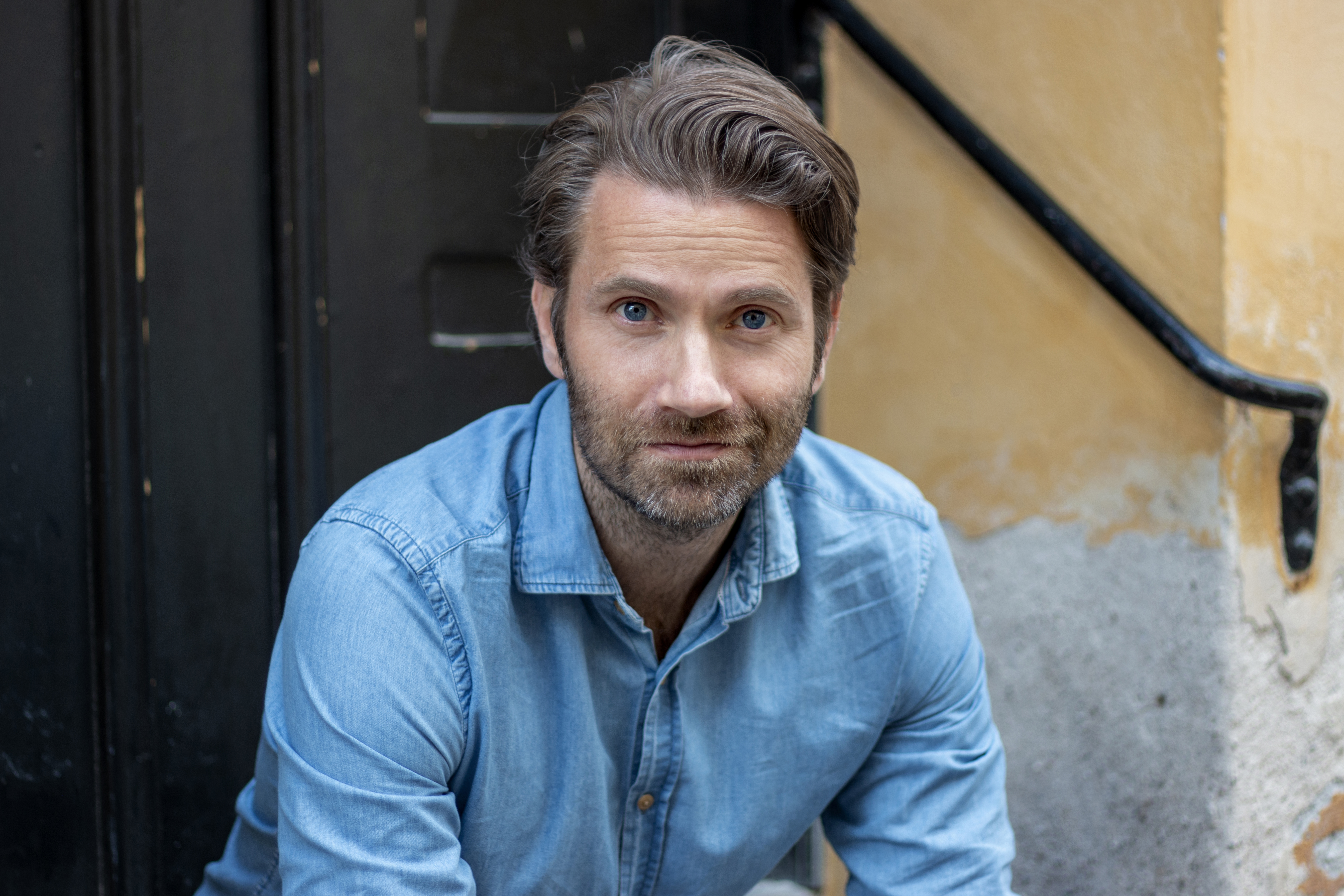HAPPY MEMORY TIP:
ONCE A YEAR, GO SOMEPLACE YOU’VE NEVER BEEN BEFORE
Make plans to visit new places—be it an exotic destination or the park across town
I love going back to places I’ve been to before. Every summer, I go to Bornholm, a small island in the Baltic Sea. I have a small place there. I enjoy knowing where the wild cherries grow and where to go spearfishing for flounders. But recently I have come to appreciate the importance of going somewhere I have not been before, to make new memories. To make the pace of time slow down when I look back ten years from now. And going someplace new doesn’t always have to mean northwest Mongolia or Ouagadougou. It can also mean that park at the other end of town.
Last year I went to the white cliff of Møn. The gigantic white cliff rises over 100 metres high above the Baltic Sea and offers some of Denmark’s most dramatic scenery. (In all fairness, the competition is not fierce in this pancake-flat country. The tallest point in Denmark is 171 metres.) The cliff is also one of the best places in Denmark to go fossil hunting. Often, fossils over 70 million years old—give or take a few years—are found there, and recently a young boy found a dinosaur tooth from a mosasaur, the T. Rex of the ocean. It takes only an hour and forty minutes to drive there from where I live in Copenhagen—yet I had never gone before. I spent the afternoon looking for fossils and humming the theme tune from the Indiana Jones movies. I didn’t find any fossils but I came home with another memory for the treasure trove.
Where will you go? We all have places we’ve been thinking about visiting but have never got around to it. So where have you never been before? It might be somewhere far away, or somewhere nearby. Get out the calendar. Get out the maps.
HAPPY MEMORY TIP:
CREATE UNIQUE MEMORY TRIGGERS
You remember things by association—so make sure you place something in your experience that can take you back to this exact moment.
Even if we have not read about Proust’s narrator’s venture into a stream of consciousness set off by a madeleine dipped in tea, we may harness the power of Proustian moments.
The more of your senses—sight, smell, hearing, taste, touch—you can use, the more vividly you can remember; and the more cues you line up, the more likely it is that you can hold on to that memory and retrieve it.
Spontaneous memories are typically a result of associations. A detail from the memory is repeated, and that trigger activates the memory. The best triggers are those associations that are linked only to one memory.
If I smell coffee, I enjoy the aroma tremendously, but because I have smelled coffee so many times there is no single memory that is likely to be retrieved by me smelling it. On the other hand, if I smell dried seaweed, I will remember a beautiful day in July. I had been spearfishing and had caught three flounders and was sitting on a warm rock, looking out over the sea. My breathing was deep and I felt relaxed, at peace and happy. I wanted to hold on to that moment and store it. So I took a good whiff of a handful of dried seaweed to increase the odds of that happening.
So, next time you’re really happy and want to capture the moment, take notice of the input from all your senses. Is there a unique scent, sound, texture or taste? Work that into your long-term memory.
HAPPY MEMORY TIP:
EVERY HAPPY MEMORY DESERVES A SOUNDTRACK
What comes to mind when you hear “Gangsta’s Paradise” by Coolio, “Bailamos” by Enrique Iglesias or “White Flag” by Dido? They were in the charts in 1995, 1999 and 2004.
In 1995, I was working in a cinema and Dangerous Minds, starring Michelle Pfeiffer, was showing; in 1999, I was in Spain and every bar was “Bailamos” crazy; and in 2004, Dido was my go-to music when I was cycling around Copenhagen. So those are the scenes that occur in my mind’s eye when those songs play. The smell of popcorn, the taste of whisky and the sight of the city on my commute at the time reappear.
Music can make us travel in time just as well as any scent. One note and we’re taken back to that time, that place, that mood. You’re right back there, as if you never left. As they say, behind every favorite song there is an untold story.
And the time-traveling aspect may shape our taste in music.
In 2018, Seth Stephens-Davidowitz, an economist and writer for The New York Times, explored data from Spotify. He examined every song that topped the charts from 1960 to 2000 and how frequently those songs were listened to by different people. No big surprise: age is a big determinant of our musical taste. Not a lot of men in their eighties have Taylor Swift’s “Shake It Off” on their playlist. (Only policemen in their forties do. If you don’t know what I’m talking about, you need to google it right now.) The study concluded that grown men and women stick with the music that captivated them in their earliest adolescence.
For instance, “Creep” by Radiohead is rather popular among men born in 1977. It is the 164th most-played song in that age group—but it is not in the top three hundred for people born in 1967 or 1987. “Creep” came out when the men who love it were about fifteen years old—and that seems to be the consistent pattern. Stephens-Davidowitz found that the songs most popular among men are those that were first released when they were between fifteen and sixteen years old; for women, the magic music age is between eleven and fifteen. So, if you loved the music as a teen, you will love it forever.
You may use that knowledge to know how to get the party started or to get people talking about their adolescent memories—or you may want to make sure your happiest moments have a soundtrack.
HAPPY MEMORY TIP:
EMBARRASSMENT SHTICK
Sharing embarrassing stories can make them lose their power.
I still remember my first days at the Ministry of Foreign Affairs in Denmark vividly. The building is located by the waterfront in central Copenhagen and filled with iconic Danish design classics. I remember walking down the long carpet-clad hallway on the third floor to my office. I remember meeting Sune, one of my new colleagues, for the first time. This was the office for Africa.
We chatted for a minute, and I remember his exact words as he said, “I’m sorry, but I think you might have stepped in something.”
Indeed I had. A dog turd. A big one. One that seemed to have my shoe in a chokehold. I had smeared it on the carpets in the new office, and on the carpets in the long hall. One hundred meters of humiliation.
If you are one of those people who is just walking along and suddenly remembers that embarrassing thing you did years ago, don’t worry, you are not alone.
Embarrassment sticks. But you may want to turn it into a shtick. Your thing. Your go-to joke. I’ve found that my embarrassing moments lose some of their power if I take control of them and laugh at them.
The story of my first day at the Ministry of Foreign Affairs is on page one of the employee manual at the Happiness Research Institute. I want my new colleagues to know that, whatever mistake they might make in their first week, I’ve made worse.
In addition, sometimes, when I do a presentation, I will start with the “Danish porn” story, just to let people know that English is not my first language and that if there is anything that is unclear, they should feel free to raise their hand and ask questions. Perhaps you could also consider how you can take some of your embarrassing moments and turn them into entertaining anecdotes—it could be a way of stripping them of their power.

Excerpted from THE ART OF MAKING MEMORIES: How to Create and Remember Happy Moments by Meik Wiking, published by William Morrow. Copyright © 2019 by Meik Wiking. Reprinted courtesy of HarperCollinsPublishers.
Follow us here and subscribe here for all the latest news on how you can keep Thriving.
Stay up to date or catch-up on all our podcasts with Arianna Huffington here.


